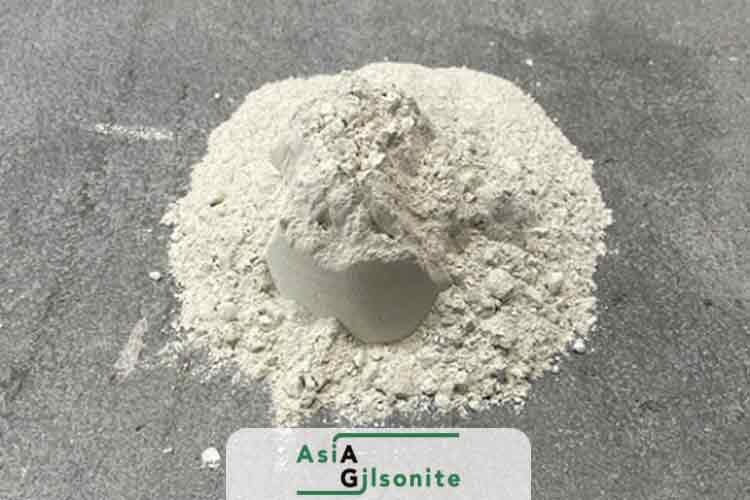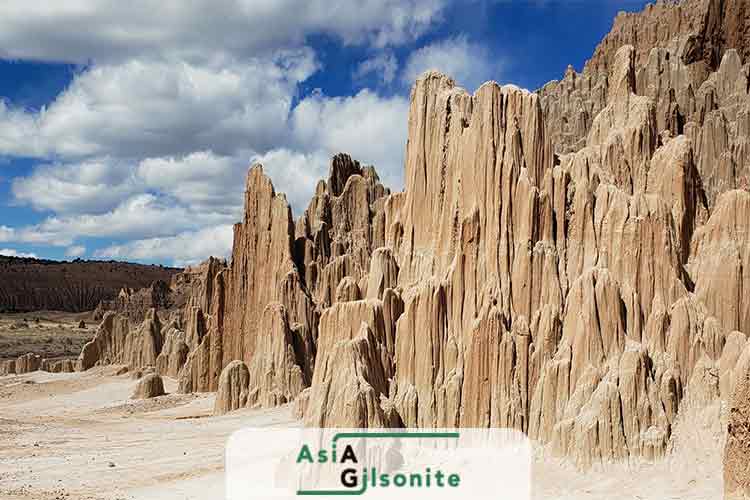Bentonite plays a vital role in the drilling industry, acting as an essential chemical component of drilling fluids used for oil and gas exploration. This peculiar mineral forms a fine, almost impenetrable barrier, capable of reducing friction and providing lubrication to guarantee successful well completion. Not to mention its multi-functional properties, this material possesses a unique ability to adjust the density of drilling fluid, improving its viscosity and aiding in the process of oil extraction. In other words, the use of these smectite deposits has revolutionized drilling processes, providing a higher degree of accuracy and efficacy.

What Is Bentonite?
Bentonite is a type of clay composed mainly of montmorillonite, created from volcanic ash and renowned for its remarkable ability to absorb liquids and swell. This clay exhibits a wide spectrum of colors, from white to yellow, gray to green, depending on the impurities it contains.
Its distinctive qualities have established the use of this material in numerous industries.
In construction, this smectite deposit operates as a binding agent in concrete, ceramics, and other construction materials, and it serves as a sealing agent for landfills, ponds, and underground storage tanks due to its power to absorb and swell, forming a strong seal.
Agriculture also takes advantage of this clay, as it helps to improve soil quality and increase water retention in sandy soils by augmenting a soil’s water-holding capacity.
When it comes to the oil and gas industry, this clay is employed in drilling mud, helping to lubricate and cool drilling bits, suspending cuttings, and preventing blowouts. Moreover, its shield-like piece of mind against formation collapse makes it an ideal safety tool.
How is Bentonite added to the Drilling Mud
This smectite deposit is typically added to the drilling fluid process as a key component to improve the mud’s viscosity and suspension properties. It helps to create a thixotropic gel-like consistency that aids in the removal of drill cuttings from the wellbore.
Here is a step-by-step process of how bentonite is added to the drilling mud:
1. Pre-hydration
Bentonite is often pre-hydrated before its incorporation into the drilling fluid to form a slurry. This process entails mixing the so-called clay with water and leaving it to sit for some time, usually several hours. During this period, the clay absorbs moisture and fully expands, exhibiting its full hydration potential.
As the voluminous slurry matures, a variety of complex chemical reactions unleash, manifesting the slurry’s unique qualities. This combination of chemical reactions is responsible for the distinct properties of the magnified clay slurry, showcased by its varying viscosity, density, and pH level.
2. Mixing
The pre-hydrated clay is blended with other items in a special drilling fluid mixing system. Mixing is an orchestrated action, where each component is added in a methodical fashion in order to ensure a uniform mixture. The clay is usually included gradually to secure a thorough blend.
3. Shearing
In order to optimize the suspension and absorption of the clay, a mechanical force process, also known as shearing, is used. This technique requires utilizing tailor-made shearing equipment or channeling the combination through the rigs’ shifting framework. Not only does shearing increase the fluid’s versatility but it also infuses the mixture with increased fluidity and finesse. As a result, the application of this physical force increases the long-term efficacy of bentonite mud.
4. Monitoring and Adjustment
The drilling process demands painstaking attention to detail to ensure optimal performance and requires careful monitoring and adjustment of the viscosity, density, and assorted other vital parameters of the drilling mud. If necessary, additional clay or other suitable additives can be integrated into the mixture in order to keep its properties consistent. Every alteration must come with vital considerations, as such minor tweaks can unforeseeably affect the quality of the drilling and subsequent results.
The Benefits of Using Bentonite in Drilling Mud
The utilization of Bentonite in drilling fluids holds numerous advantages. Its rheological properties can be adjusted to control the viscosity and fluidity of the drilling mud, allowing for the suspension and transportation of drill cuttings to the surface.
The concentration of the clay can also be modified in order to adjust the weight of the mud, aiding in countering pressure from formations being drilled. It additionally provides lubrication and cooling, forming a thin, low-friction film on the wellbore walls.
It further stabilizes the formation, forming an impermeable filter cake on the wall and preventing the loss of drilling fluids. Through clay inhibition, this smectite deposit is effective in absorbing and encapsulating reactive clays, thus preventing interaction with the drilling mud.
More importantly, it is an environmentally friendly, natural, and non-toxic material that has no negative impacts on human health or the environment.
Conclusion
Bentonite is a key component in drilling mud and a pivotal ingredient in oil and gas exploration. Its use not only ensures wellbore stability but also reduces the risk of formation damage and increases the rate of penetration. This versatile material offers superior performance compared to other drilling fluid additives while also providing cost-effectiveness. It can be applied to a vast range of oil and gas operations, significantly improving efficiency, safety, and drilling performance. In conclusion, this clay is an inestimable material in the oil and gas industry, and its applications will continue to render remarkable achievements.





